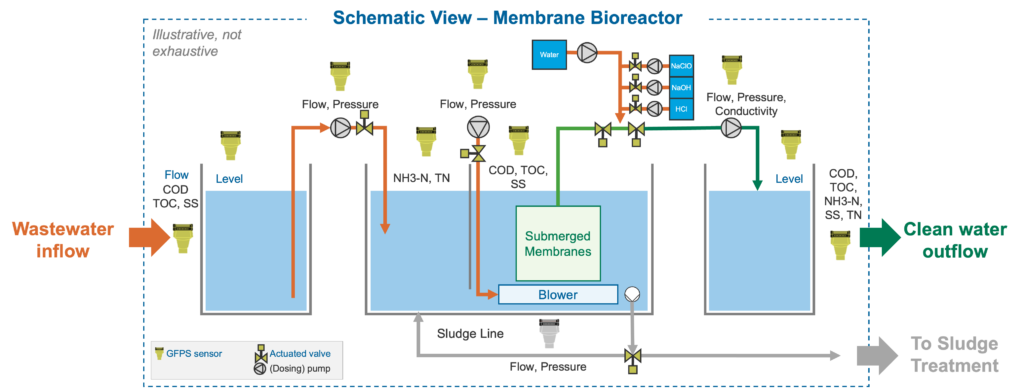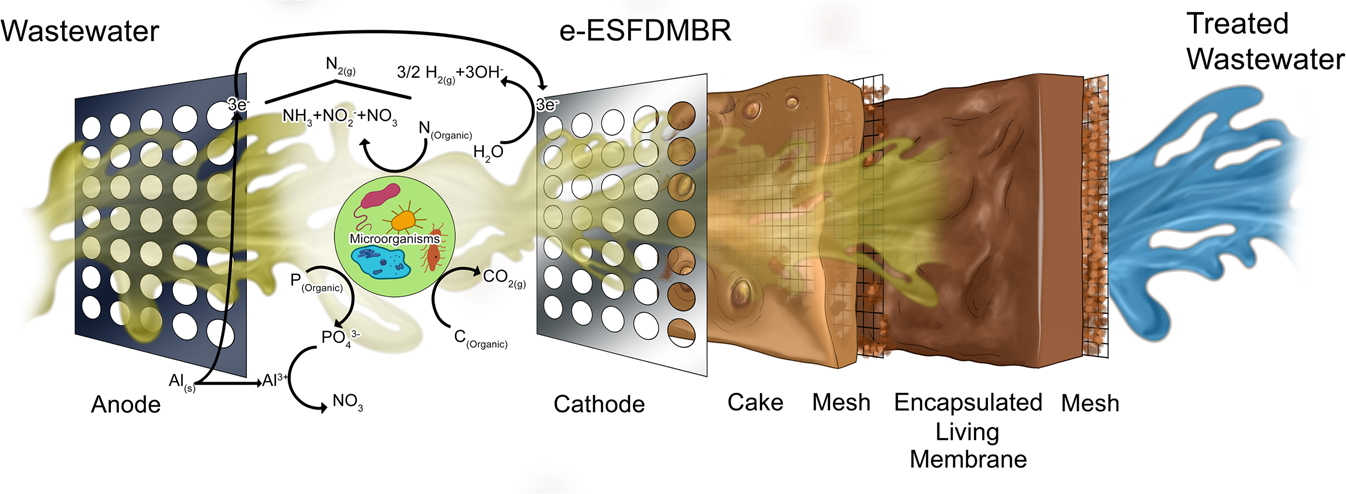Understanding the Basics of Membrane Bioreactor Systems for Wastewater Management
Wiki Article
Membrane Layer Bioreactors Discussed: Reliable Solutions for Tidy Water
Membrane bioreactors (MBRs) have arised as an innovative service for addressing the pressing obstacles of wastewater therapy. By integrating biological processes with advanced membrane filtering, MBRs not only improve the high quality of cured water yet additionally reduce the spatial requirements of treatment facilities. As ecological problems increase, the duty of MBR modern technology in advertising lasting water monitoring comes to be increasingly significant. The intricacies of their procedure, benefits, and prospective applications merit a closer examination to totally recognize their effect on the future of water treatment.
What Are Membrane Bioreactors?
Membrane bioreactors (MBRs) are innovative wastewater therapy systems that integrate organic destruction processes with membrane purification innovation. This combination allows for the reliable removal of impurities from water, making MBRs a recommended option in various applications, consisting of community wastewater therapy and industrial effluent monitoring.
One of the essential benefits of MBRs is their ability to produce high-grade effluent, usually appropriate for reuse in irrigation or commercial processes. Furthermore, MBRs require a smaller impact compared to traditional treatment systems, making them suitable for urban setups where room may be restricted.
Moreover, MBRs can successfully handle differing influent lots and are less prone to the results of harmful shocks. These characteristics add to their expanding popularity as a sustainable option for addressing the boosting need for tidy water while reducing ecological influences.
How Membrane Bioreactors Job
While the procedure of membrane layer bioreactors (MBRs) may seem complicated, it essentially rotates around the harmony between biological processes and membrane filtering. MBRs incorporate an organic therapy procedure, generally triggered sludge, with a membrane layer splitting up device to deal with wastewater successfully.In an MBR system, wastewater is first introduced into a bioreactor where microorganisms break down natural matter and other impurities. The organic task decreases the concentration of contaminants while advertising the development of biomass. Following this organic treatment, the blended liquor goes through membrane filtering, which can be microfiltration or ultrafiltration, depending upon the preferred effluent high quality.
The membranes serve as a physical barrier, allowing water and small solutes to pass while retaining suspended solids and bigger particles. This makes it possible for the system to keep a high focus of biomass within the reactor, enhancing the treatment performance.
Moreover, the continual splitting up of treated water from the biomass helps with a compact design and minimizes the impact of the therapy facility. Overall, the mix of organic deterioration and membrane purification in MBRs causes efficient and reliable wastewater treatment, guaranteeing high-quality effluent ideal for different applications.
Advantages of MBR Modern Technology
Among the essential benefits of membrane bioreactor (MBR) technology is its capacity to create high-quality effluent with a significantly lowered footprint contrasted to traditional wastewater treatment techniques. MBR systems properly integrate biological therapy and membrane filtering, resulting in premium removal of impurities, including put on hold solids, pathogens, and natural matter. This capacity results in effluent that often satisfies or exceeds rigid regulatory requirements for reuse and discharge.Additionally, MBR modern technology enables higher biomass concentrations, which enhances the therapy performance and decreases the required activator volume. This compact layout is official site especially valuable in metropolitan locations where space is restricted. The operational adaptability of MBR systems additionally suggests they can adapt to varying influent high qualities and flow rates, making them appropriate for a wide variety of applications.
Additionally, the minimized sludge manufacturing related to MBR procedures contributes to lower operational and upkeep expenses. The membranes serve as a physical barrier, reducing the risk of obstructing and making it possible for longer functional periods in between cleaning. Overall, the advantages of MBR innovation make it an attractive remedy for sustainable wastewater therapy, dealing with both ecological worries and the need for effective resource administration.
Applications of Membrane Bioreactors
With their adaptability and effectiveness, membrane bioreactors (MBRs) discover applications across various sectors, including municipal wastewater treatment, industrial processes, and even water reclamation. In community settings, MBRs provide a portable remedy for dealing with wastewater, properly getting rid of pollutants while concurrently creating high-grade effluent that fulfills rigid regulative standards. This makes them particularly ideal for locations with restricted space.In commercial applications, MBR modern technology is used for treating procedure water, especially in industries such as food and drink, drugs, and petrochemicals. These industries take advantage of MBRs' capability to deal with high organic lots and their efficiency in recovering beneficial resources from wastewater, such as nutrients and water.
Moreover, MBRs play a crucial duty in water improvement initiatives, making it possible for the reuse of treated wastewater for watering, industrial processes, or even as safe and clean water after additional treatment (Membrane Bioreactor). Their effectiveness in removing toxins and pathogens makes them a dependable selection for making sure water quality in different reuse applications
Future of Water Treatment Solutions
The future of water treatment remedies is poised for transformative innovations driven by technological technology and enhancing ecological awareness. As international water scarcity ends up being a pushing issue, new techniques, including membrane layer bioreactor (MBR) systems, are readied to play a pivotal function in boosting the efficiency and sustainability of water treatment procedures.Arising technologies such as expert system and artificial intelligence are anticipated to optimize treatment operations, permitting real-time surveillance and predictive maintenance. This will certainly boost the total reliability and efficiency of water treatment centers. In addition, advancements in membrane materials, such as graphene and nanofiltration, guarantee to boost permeation prices and reduce fouling, leading to lower energy consumption and operational expenses.
Additionally, the integration of renewable resource resources into water treatment plants will certainly add to greener methods. The circular economy version will certainly likewise gain traction, urging the recuperation of useful resources from wastewater, check my source such as nutrients and power.
Verdict

Membrane bioreactors (MBRs) have actually emerged as an advanced remedy for attending to the pressing difficulties of wastewater therapy. By incorporating biological procedures with innovative membrane layer purification, MBRs not just website here enhance the high quality of cured water however also minimize the spatial requirements of treatment centers.One of the essential benefits of membrane bioreactor (MBR) innovation is its capacity to produce high-grade effluent with a substantially lowered footprint contrasted to standard wastewater treatment techniques.With their convenience and efficiency, membrane layer bioreactors (MBRs) locate applications across different markets, consisting of community wastewater treatment, commercial procedures, and also water reclamation.In final thought, membrane layer bioreactors stand for a significant development in wastewater treatment technology, incorporating organic procedures with efficient membrane filtering to create high-grade effluent.
Report this wiki page